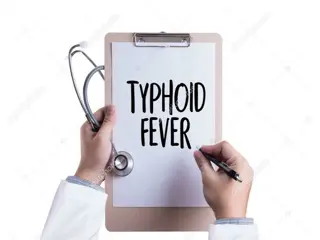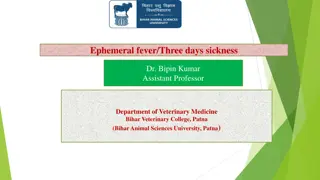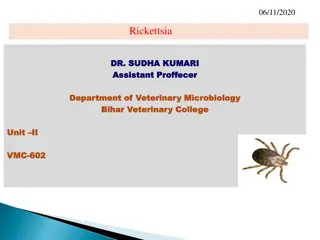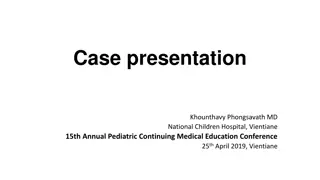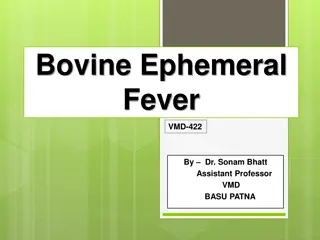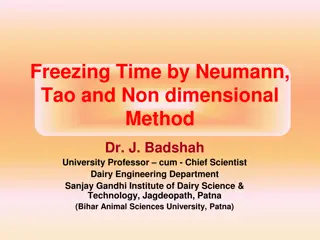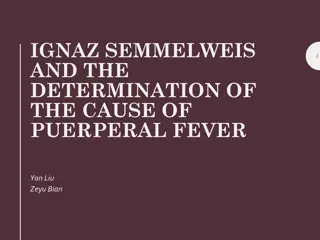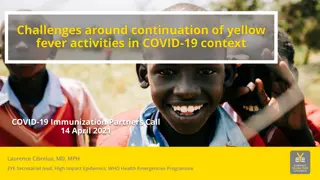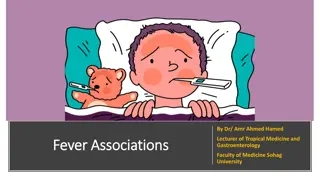
Rocky Mountain Spotted Fever Immune Response
Explore the immune responses to Rocky Mountain Spotted Fever caused by Rickettsia rickettsii transmitted through tick bites. Learn about the clinical presentation, diagnosis, and host immune reactions, including the innate and adaptive responses triggered by tick laceration. The interaction between the pathogen and the host's immune system, particularly complement activation, plays a crucial role in the progression of this disease.
Download Presentation

Please find below an Image/Link to download the presentation.
The content on the website is provided AS IS for your information and personal use only. It may not be sold, licensed, or shared on other websites without obtaining consent from the author. If you encounter any issues during the download, it is possible that the publisher has removed the file from their server.
You are allowed to download the files provided on this website for personal or commercial use, subject to the condition that they are used lawfully. All files are the property of their respective owners.
The content on the website is provided AS IS for your information and personal use only. It may not be sold, licensed, or shared on other websites without obtaining consent from the author.
E N D
Presentation Transcript
ROCKY MOUNTAIN SPOTTED FEVER IMMUNE RESPONSE BY PAULA TAO
A RED RASH Robert is a 41-year-old man who came down with a high fever, headache, abdominal pain and muscle aches. He decides to tough it out at home but after 2 days, he also develops a red rash on his arms and legs. His wife drives him to the hospital where he is assessed by the emergency physician. The doctor asks about any insect bites and Robert tells him about getting tick bites during a camping trip one week prior to developing the first symptoms. Upon examining Robert he notes the macular rash on the arms and legs. Initial bloodwork shows that Robert has a low platelet count, low sodium levels and abnormal liver function tests. The doctor orders a microbiological serology test and starts him on intravenous antibiotics. The acute serologic test for Rickettsia rickettsii shows a low level of IgM antibodies and Rick is diagnosed with Rocky Mountain Spotted Fever. The diagnosis is subsequently confirmed when convalescent serology shows a 16- fold rise in antibody titers to R. rickettsia.
RICKETTSIA RICKETTSII Spread to human hosts by ixodid (hard) ticks Onset of diseases begins with: Fever Severe headache Muscle pain Followed by a development of rash The skin is considered the pathogen carrying tick-host interface Tick bites elicit an inflammatory immune response in the skin Eosinophils accumulate at the tick-bite site
RESPONSES TO TICK LACERATION Tick laceration and the creation of a pool-like feeding site in the skin initiates 5 key responses: Immediate Response Inflammatory Response Proliferation Migration Contraction
HOST RESPONSE Innate Immune Response Complement Activation Ixodid tick saliva contains a complex mixture of active molecules that potentiate transmission of R. rickettsia by modulating host immune defenses Adaptive Immune Response Antigen specific responses of the T lymphocytes Antigen specific responses of the B lymphocytes
INNATE IMMUNE RESPONSE COMPLEMENT ACTIVATION The alternative, lectin, and classical pathways of complement activation are the primary lines of defense against infectious agents The alternative pathway is the most common target for tick modulation C3 protein is made in the liver and present at large concentrations in the blood and tissue C3 gets spontaneously cleaved into C3b and reacts strongly to bind to amino or hydroxyl groups on the surface of bacteria C3bBb molecule (a convertase) cleaves other C3 molecules to make more C3b as well as cleaving C5 to make C5b
INNATE IMMUNE RESPONSE MEMBRANE ATTACK COMPLEX (MAC) FORMATION C5b binds to C6 to form the C5b-6 complex This complex then binds to C7 forming the C5b-6-7 complex The C5b-6-7 complex binds to C8 to form the C5b-6- 7-8 complex C5b-6-7-8 subsequently binds to C9 (alpha, beta and gamma chains) and acts as a catalyst in the polymerization of C9 The MAC as well as other complement proteins (C5b, C6, C7 and C8) anchor themselves to the cell wall and work together to opsonize bacteria
INNATE IMMUNE RESPONSE THE INFLAMMATORY RESPONSE Begins with the passive leakage of circulating leukocytes (mostly neutrophils) from damaged blood vessels into the wound Immune cells that are already resident within the tissue (mast cells) release chemokines and cytokines (TNF-a and IFNy) Inflammatory chemokines and cytokines recruit neutrophils and macrophages from nearby blood vessels Cytokines also trigger the expression of selectins, which control the rolling and then tethering of leukocytes to the vessel wall and facilitate crossing of the endothelial barrier, enhanced by the vessel dilation from histamine released by mast cells Neutrophils play an important role in killing the invading microorganisms by using bursts of reactive oxygen species (ROS)
INNATE IMMUNE RESPONSE INNATE IMMUNE CELLS
ADAPTIVE IMMUNE RESPONSE B cells are uniquely adapted to bind specific soluble molecules through their cell-surface immunoglobulins (Ig) B cells internalize the antigens bound by their Ig receptors and display peptide fragments on their MHC II complexes which induces CD4 T cell differentiation into T helper cells (Th) Cell mediated immune responses involve the destruction of infected cells by cytotoxic T cells R. rickettsii mounts an intracellular invasion and destruction of intracellular pathogens is done by macrophages, which are activated by Th1 cells Th1 cells are involved in humoral immunity by inducing the production of opsonizing antibodies and Th2 cells are involved in activating na ve B cells to secrete IgM, IgG, IgA, and IgE Helper T-cell memory against an antigen appears abruptly and is at its maximal level after 5 days Then Memory B cells appear some days later and enter a phase of proliferation and selection in the lymphoid tissue
ADAPTIVE IMMUNE RESPONSE ADAPTIVE IMMUNE CELLS
CASE STUDY RELEVANCE R. rickettsii expresses OmpA and OmpB surface proteins OmpA and OmpB proteins on the bacteria s outer membrane are recognized by the OMP antibodies (IgG2a) The antibodies have the ability to eliminate the bacteria from tissues within 24 hours after the infection Robert s high antibody titers from analyzed by the microbiology lab can be explained by this response After the activation of na ve T cells in in response to an antigen (primary immune response), armed effector T cells generates immunological memory, which in the future will provide a quicker and more robust response to a pathogenic invasion
HOST DAMAGE Medical Microbiology suggests that symptoms are induced by the pathogen itself as the pathogenic infection is responsible for activating host immune components which cause damage to host Host immune, inflammatory, and coagulation systems are activated and appear to benefit the patient however cytokine and inflammatory mediator account of host damage
HOST DAMAGE INFLAMMATORY CYTOKINES AND REACTIVE SPECIES TNF alpha and IFN gamma induce the production of chemically reactive oxygen species (ROS) in neutrophils that result in host damage: Superoxide anion Hydrogen peroxide Hydroxyl radical products In response to bacterial invasion, epithelial cells produce these reactive species: Yields lipid peroxidation of the host cell membrane causing damage and death to endothelial cell Leaking of plasma into peripheral tissues Decrease in blood volume Shock Damage to the cell membrane causes an influx of water
HOST DAMAGE IMMUNE RESPONSE Damage results from the accumulation of inflammatory cells along the sites of blood vessel infection The functions of several cells and components of the immune response in reaction to the presence of the pathogen all contribute to the host damage Neutrophil phagocytosis and entry into blood vessels Mast cells secrete factors and mediators such as histamine which dilate blood vessels Macrophage phagocytosis and cytokine/chemokine secretion These prolong the inflammatory response, yielding damage to self tissues as well as sustained attraction of phagocytes to the site of infection and continuous production of destructive ROS until clearance
HOST DAMAGE R. RICKETTSII R. rickettsii grow in small or medium sized blood vessels throughout the human body including: Brain Skin Heart Cause severe damage and death to the cells which R. rickettsia multiply and replicate in Causes hyperplasia (blood leakage into peripheral tissues via holes) Causes blood flow obstructing thrombus to form Thrombosis (blood clot formation) can ultimately result in deficiencies to circulation
BACTERIAL EVASION Bacterial evasion occurs in six different ways: Evade the Host Apoptotic Defence Phagosome Escape Invasion of Non-Phagocytic Cells Use of Actin Systems Arthropod Vector Support in Evasion Use of Type IV Secretion System (T4SS)
EVADE THE HOST APOPTOTIC DEFENCE R. rickettsii is able to directly interact with NF-kB in its inactive form, causing activation and inducing the transcription of its regulated genes This activation is actually key to R. rickettsii survival as the bacteria utilizes NF- B as an inhibitor of the apoptotic defense activated in host cells In a normal case, when cells become infected, apoptosis (programmed cell death) is induced by the host to limit the spread of infection, since this intracellular environment is often key to pathogen survival and infection R. rickettsii has evolved the ability to evade this host defense using NF-kB, which allows R. rickettsii to maintain an intracellular environment essential for its replication and spread NF- B allows the maintenance of mitochondrial integrity inside the host cell, which during infection would usually not be maintained inducing apoptosis by the activation of caspase-9
PHAGOSOME ESCAPE R. rickettsii are able to escape the phagosome, once ingested by lysing the phagosomal membrane in order to avoid lysozymes that would usually degrade it R. rickettsii secretes phospholipase D and hemolysin C, encoded in genes the genes tlyC and pld Phospholipase D and hemolysin C disrupt the phagosomal membrane, allowing escape This process allows evasion of the negative environment inside the phagosome, degradation by lysozymes, and allows access to nutrient rich cytosols
INVASION OF NON-PHAGOCYTIC CELLS R. rickettsii are able to invade non-phagocytic host cells with the use of its surface protein, OmpB OmpB protein was found to act as a ligand for Ku70, a subunit of a DNA-dependant protein kinase The interaction that occurs between Ku70 and OmpB, is then sufficient enough to mediate invasion of nonphagocytic cells
USE OF ACTIN SYSTEMS R. rickettsii utilize host actin systems to gain mobility and facilitate rapid escape from host cells In the cytosol, R. rickettsii expresses a surface protein, Sca2 Sca2 recruit an Arp2/3 complex, allowing induction of host actin polymerization This actin tail formation helps the bacterium through the cell and across cell membranes into adjacent endothelial cells or extracellular space
ARTHROPOD VECTOR SUPPORT IN EVASION Bacteria are able to evade the host immune system by being transferred through an arthropod vector s saliva Tick saliva contains molecules that help block components of the alternative complement pathway such as displacing C3b from factor Bb and cleaving C3b C5a production by the cleavage of C5 is also used to inhibit the creation of the membrane attack complex C5a production by the cleavage of C5 is also used to inhibit the creation of the membrane attack complex Multiple tick species synthesize salivary gland inhibitors for the neutrophil chemoattractant IL-8 and other chemokines Overall, we can see that many aspects of their evolved transfer vector can help the bacteria evade the host immune response
USE OF TYPE IV SECRETION SYSTEM (T4SS) R. rickettsii utilize the type IV secretion system, to promote survival by transport of virulence factors/effector proteins, as well as synthesize nutrients from the host cell Type IV secretion systems (T4SSs) are macromolecular complexes that transport protein, DNA, and nucleoprotein across the bacterial cell envelope in both Gram-negative and Gram-positive species, as well as some wall-less bacteria and archaea Highly specialized P-T4SS, Rickettsiales vir homolog (rvh) is encoded by all species of Rickettsia However, the Rickettsia T4SS has not been functionally characterized for its role in symbiosis/virulence, and none of its substrates are known.
OUTCOME As long as prompt and appropriate antibiotic treatment is ensued, full recovery and elimination of bacteria is quite common, with only a 3-5% mortality rate However, if the R. rickettsii infection remains untreated, there is a mortality rate of 20-25% If the patient receives treatment within the first 4-5 days of disease, the fever can generally subside within 1-3 days Doxycyclin is generally the antibiotic drug of choice for Rocky Mountain Spotted Fever, however in some cases Tetracyclin or Chloramphenicol are also options for use
OUTCOME SEVERE CASES Severely ill patients may require longer antibiotic treatments Some long-term health problems may surface such as: Partial paralysis of the lower extremities Gangrene requiring amputation of fingers, toes, or arms or legs Hearing loss Loss of bowel or bladder control Movement disorders Language disorders These don t often occur, however if the disease remains untreated for a long period of time it is possible
OUTCOME FUTURE Protective immunity can be conferred after primary infection with R. rickettsia Specifically noted, IgG2a provides protective immunity with recognition of Adr2, a surface antigen on the bacteria This antibody supports a strong immune response, with rapid activation of T-cells and innate immune cells

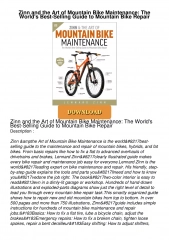
![[PDF READ ONLINE] Mountain Claiming (BIG-Secrets of Mountain Men Book 3)](/thumb/42287/pdf-read-online-mountain-claiming-big-secrets-of-mountain-men-book-3.jpg)


